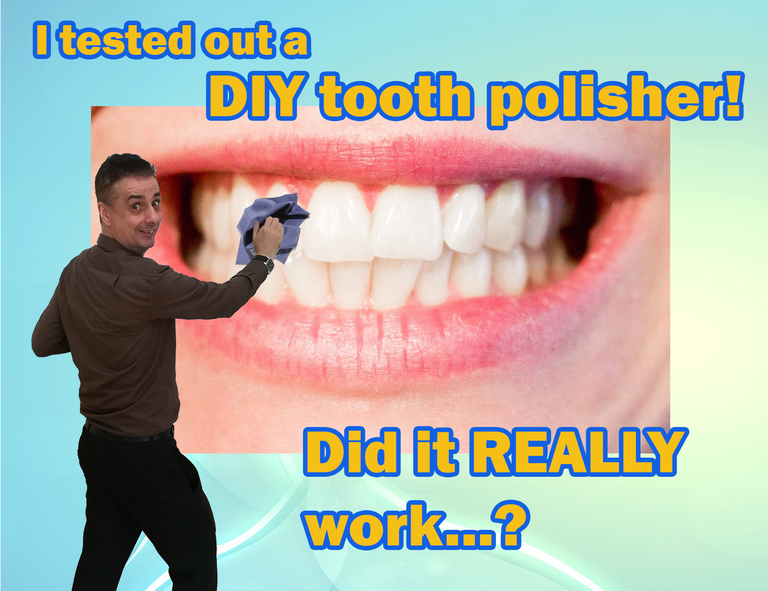
Are those DIY tooth polishers just a useless gimmick or do they really work? I decided to find out…
I love black coffee. I drink on average only two cups per day, or maybe three at the weekend, but after about three months following my regular dental visit my teeth begin to show staining.
This staining can look quite unsightly, even though my dentist tells me it’s not too bad, but I guess he probably gets to see a lot worse. Nevertheless, I wanted to see if there was anything I could do to stop this.
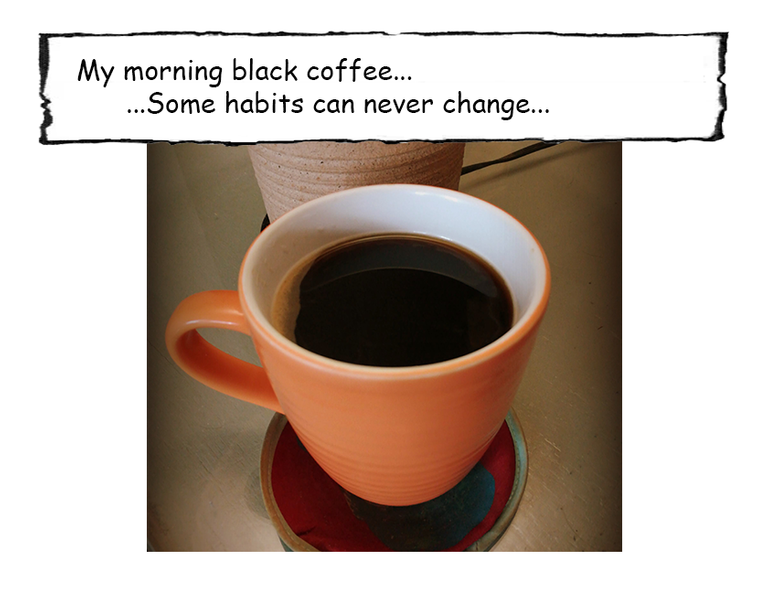
Now, before I go any further, I want to point out that I’m not looking for a way to avoid going to the dentist, and that’s even though I absolutely hate going. Seriously, there’s no way I would ever miss my six-month visit – and nor should you – but I would at least like to keep my teeth looking cosmetically nice before I next see him.
I actually take a lot of care of my teeth, partly because I have a fear of having any kind of dental treatment.
To help do this I purchased a Philips Sonicare FlexCare Platinum electric toothbrush and I’ve never looked back. I’m serious; this thing has worked wonders!
The problem is, my teeth aren’t very straight because when I was 15 years old I refused to have a brace fitted after the dentist told me he would need to remove five teeth. I know this was a stupid decision of mine, but this was all due to my fear of dentists. Because of this, my teeth are a bit crooked and so I need to take extra care of them and by dumping my old regular toothbrush for the Philips Sonicare has resulted in a massive improvement in both my teeth and gums. It’s just the staining which is the problem.
Other than having to give up my beloved black coffee, I decided to look around to see what products were available for removing the stains.
I was surprised to find that the only products available were cheaply made and completely lacking any kind of seal of approval. There was no such thing as a Philips or Braun electric tooth polisher, and so anything of quality would literally have to be professional dental equipment and there was no way I was going to go down that route.
Saying that, though, I did find something called the Bilistic Pro-Series Tooth Polisher, which looked really nice and it had its own slick website, but strangely enough, there were no reviews for it anywhere and its price tag of $199 meant that there was no way I was going to be taking a chance with it. Therefore, I had no other choice but to look into these rather dubious low-end products.
The first of these was the Staino tooth stain eraser.
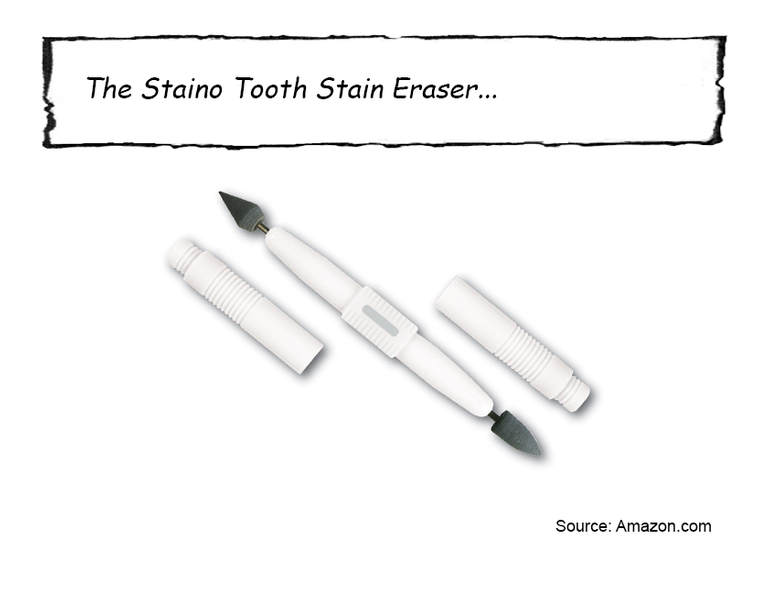
This tooth eraser looks rather like a pen with a dental polishing tip attached to either end. Its size is also similar with measurements of 4" long and 1/4" diameter. To use it you have to lightly rub the tip over the stained area until the stain is erased. Each of the two heads has a different purpose. One is for using between the teeth, whereas, the other is for the surface of the tooth, itself. The polishing tips are made from hard rubber and so they won’t damage your teeth’s enamel. Here is a video of someone demonstrating a similar eraser, but made by a different brand:
On Amazon 46% of the 394 users gave this product a 5-star rating, followed by 15% for a 4-star rating, 10% for a 3-star rating, 7% for a 2-star rating, but quite a large proportion at 22% gave it a 1-star rating.
The biggest complaints in the 1-star rating category were that it didn’t work; it was cheaply made, or that it wasn’t worth the price of $17. Because of this, I decided to continue looking.
What I wanted to find were products that were more akin to something the dentist uses.
Then I found a battery powered tooth polisher.
There were a few different models of these, so I went to the one with the better customer rating and started to investigate further. This particular model was the Alayna Tooth Polisher and it was powered by two AA batteries.
On Amazon 43% of the 753 users gave it a 5-star rating, followed by 12% for a 4-star rating, 11% for a 3-star rating, 9% for a 2-star rating, but quite a large 25% gave it a 1-star rating. These percentages were pretty similar to those of the Staino tooth stain eraser.
Again, the customer ratings didn’t excite me too much and nor did its price of $16, so I decided to look elsewhere and that’s when I found a similar model at the Chinese online retailer Aliexpress. This time it was only $5 and that included free shipping.
‘What the heck!’ I thought, “I’m going to give this a try”.
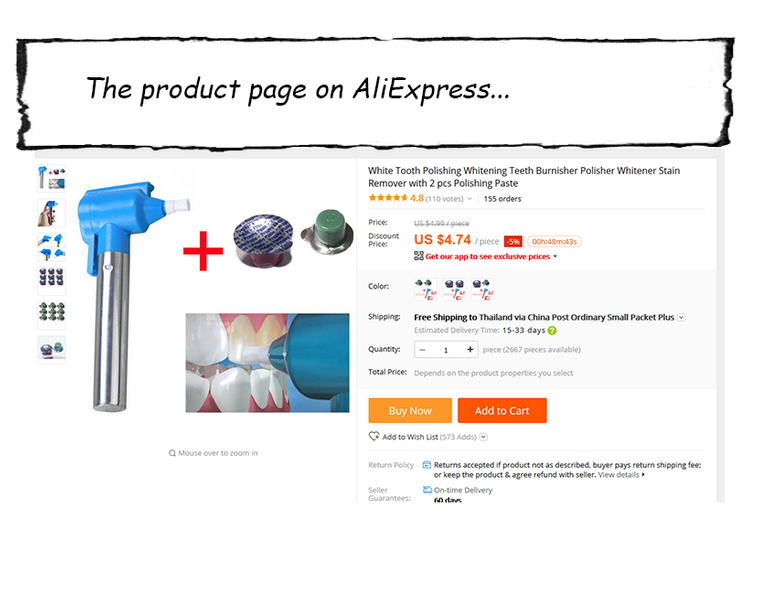
My order was quickly dispatched, although I did have to wait about three weeks for it to reach me, but fair enough, for that price I wasn’t too concerned.
…So, what did I actually receive?
The product didn’t contain any of its own packaging. Instead, it came sealed in a clear plastic bag, as seen in the photo below.
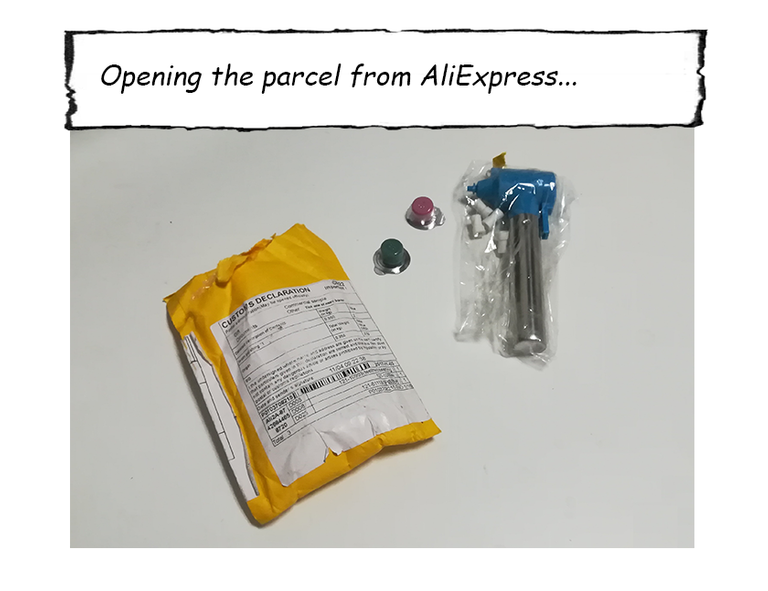
The polisher was called the Luma Smile and everything looked exactly the same as the Alayna Tooth Polisher, except that the Alayna was manufactured from a more transparent looking plastic. Apart from that, the design and everything else looked exactly the same.
The item was 5” long with a lightweight metal handle. The handle holds the two AA batteries, but these don’t come included. To insert the batteries, I simply had to unscrew the handle from the head of the polisher.

The head itself is made from blue plastic and inside is a small electric motor. From the front of the head protrudes the motor’s shaft on which you attach one of the five small hard rubber polishing tips which came separately. These tips polish the teeth by rotating at very high speed – just like what the dentist uses – and supposedly, they can be used up to 50 times. On the front of the head is also a small light for lighting up the area of the mouth you are polishing.
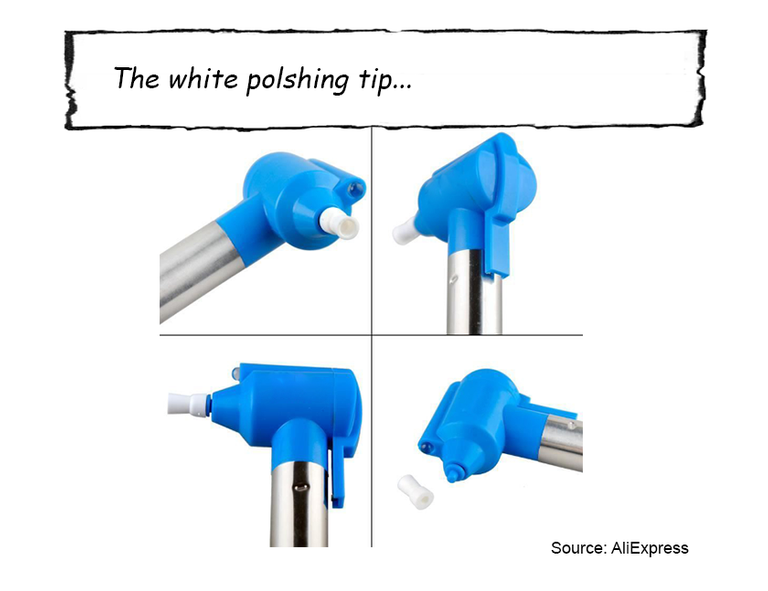
To operate the polisher, you must squeeze down on what looks like a pen clip which runs down its side and once squeezed it will keep running until you release the pressure.
Also included were two small plastic cups containing polishing paste. This paste must be used instead of regular toothpaste and it’s the same stuff the dentist uses when polishing teeth. I had two different flavors come with mine. One was cotton candy and the other was mint. Each cup contains 2g of the paste, so they are quite small, which means you might need to order extra ones at a later date.
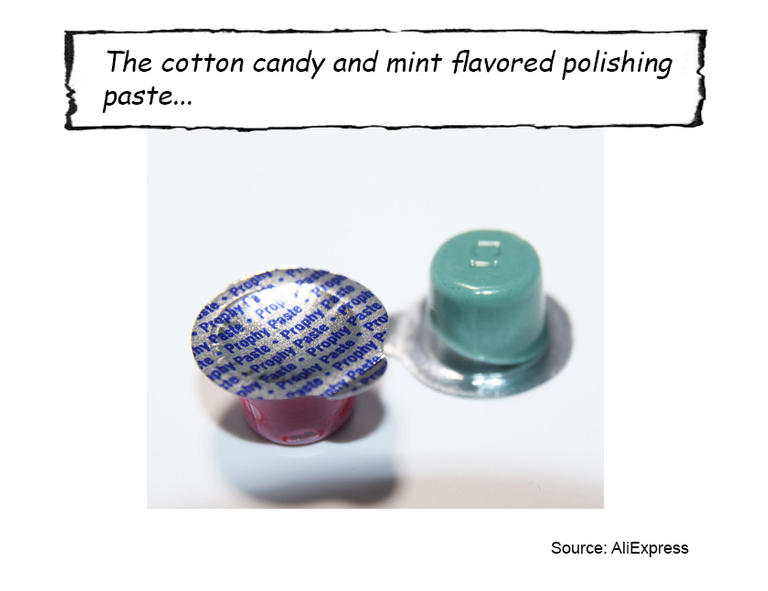
These are easier enough to buy and they can be purchased from either Aliexpress or Amazon. Amazon has the better selection with a choice of Medium, Coarse, and X-Coarse grit and all of these contain fluoride. I’m not sure, though, what type of grit my polishing paste contains because there’s no indication on the packaging.
Now comes the fun part – trying it out!
I inserted the two batteries, screwed the handle back onto the head and placed one of the white plastic polishing tips firmly onto the shaft. I then dipped the polishing tip into one of the opened cups of polishing paste and I was ready to go.
Getting the polisher to work was a bit hit or miss. For it to operate, the plastic clip must be squeezed enough so that it touches the metal handle and so creating an electrical contact. It wasn’t always easy to do this, but when it did connect the polisher buzzed into action and the small light lit up my mouth.
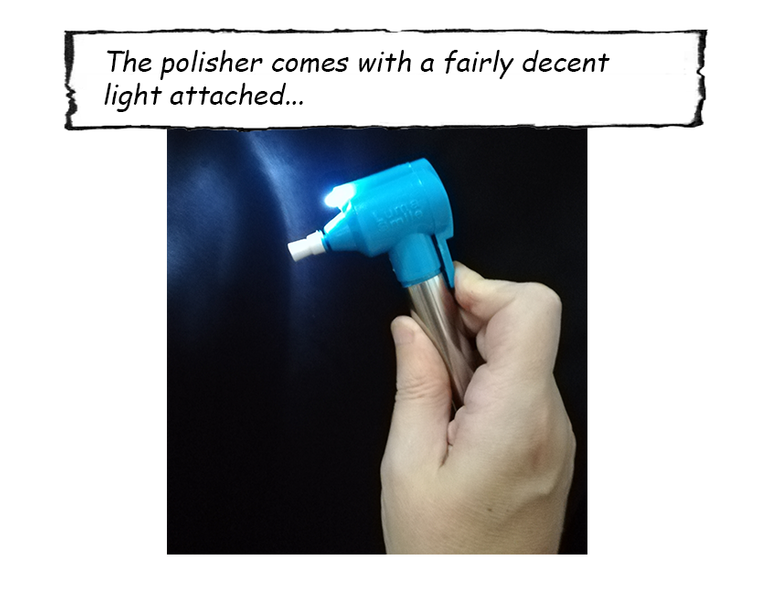
I gently pressed down onto a stained area of tooth and to my surprise it quickly removed the stain. I then moved around to the other areas of my front lower teeth. At times this was hampered when on a few occasions the polishing tip came off, but when everything did work, the staining was removed.
It is said that if you do have problems with the tip coming off, then try to make sure there’s no moisture underneath it. Overall, this does seem to be a bit of a design flaw.
During the process, I didn’t feel any discomfort and that includes the times when the tip came off. There was also no discomfort when I overran onto my gums. I have read that if you polish one area for too long, you might begin to feel the tooth heat up. I didn’t experience this myself, but obviously this is something that should be avoided.
As far as the ergonomics of the device goes - there aren’t any!
I wouldn’t even try to attempt to polish the molars at the back of my mouth with this device, nor the back of my front teeth. This is because the device just isn’t designed in any way for reaching into those areas.
Secondly, I would be afraid of the polishing tip flying off and, in the unlikely event, disappearing down the back of my throat. No, I’m quite happy to leave those areas for my dentist to do and anyway, people can’t see those areas of my mouth, so it doesn’t really bother me.
Finally, I also have a white filling on the back of one of my front teeth and it’s advised not to polish over these, otherwise they can become damaged. Having a filling replaced is the last thing I’d want to have.
What were my results like?
I was happy with it. I was able to remove a lot of the staining, as you can see in the photo below. The areas where I struggled to remove any were between the teeth themselves because the polishing tip wasn’t able to get in close enough to the gap to do its work. Even so, I think with a little more effort I could probably remove some more stain from the ends of the two lower canine teeth and tidy up my front incisors some more.
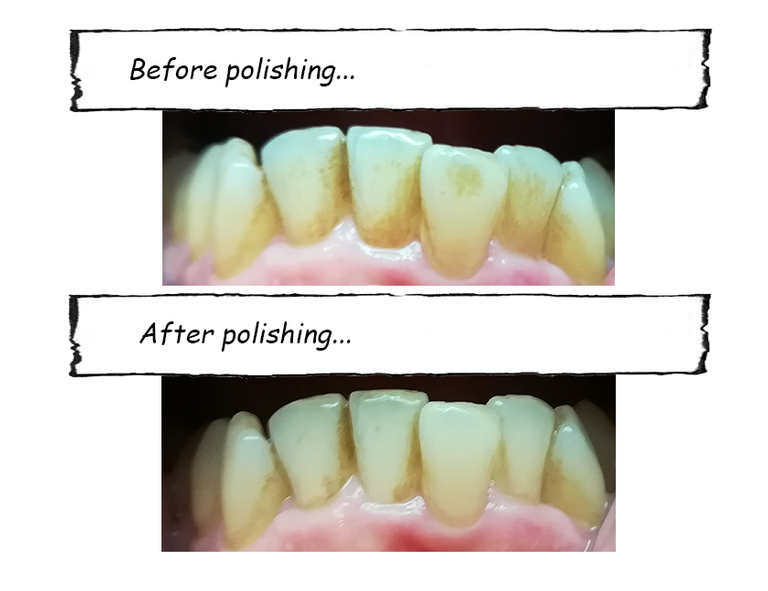
The staining left after I polished them is much more evident in the photo above than if you were to look at me face to face. I think it has definitely created an improvement, although the staining on the gaps between my teeth is still evident. All in all, though, it did a pretty good job.
What was my overall verdict?
For the price I paid, I was impressed with how well it did remove the stain in the areas it could reach, but it’s definitely not a substitute to having professional cleaning.
It is suggested that it could be used once a week, although I personally would only use it when the staining starts to become noticeable. This is because I’m not sure how good it would be for the teeth’s enamel if used too often.
The device is hampered by its poor design and I’m not sure how long it would last before something goes wrong with it, but hey, even if it only works once, that temporary clean for $5 was worth it.
In conclusion, my dentist hasn’t lost a customer, but it will definitely help to keep my teeth looking good before my next visit and for that reason alone, I think it was a good buy.
If you have any comments or suggestions, then I would love to hear from you – and I promise, I won’t show you any more photos of my teeth.
Until next time…

